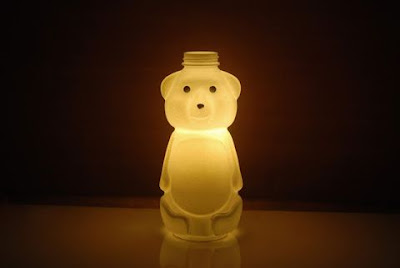This hand is cast in white plaster compound in a disposable latex glove.
1. Pour water into a bucket and sprinkle plaster compound slowly until it forms a peak at the surface of the water. Leave it for about 8 min.
2. Stir well until air bubbles form on the surface. NB: Plaster generates heat during hardening (the larger the quantity, the greater the heat).
3. Pour the mixture into the disposable glove. A TIP: Ask somebody to help you hold the glove whilst pouring to ease the process.
4. Close the glove with a piece of string, tied tightly.
5. Leave the filled glove to dry on top of a round object in order to get a hollow shape. Leave to dry for approx. 1 hour. Cut away the glove.
Another example with other variants
Another example with other variants










.jpg)







.jpg)
.jpg)

.jpg)


.jpg)
















.jpg)











